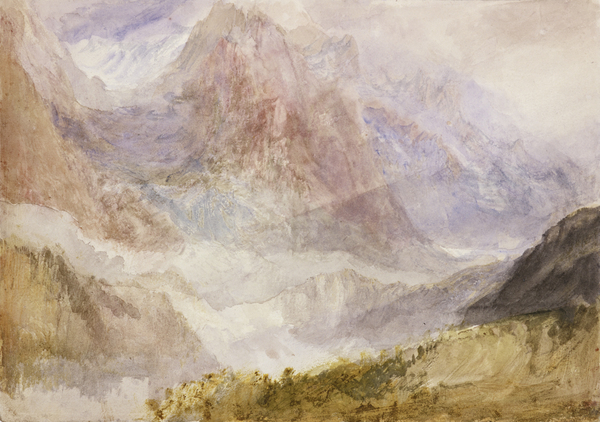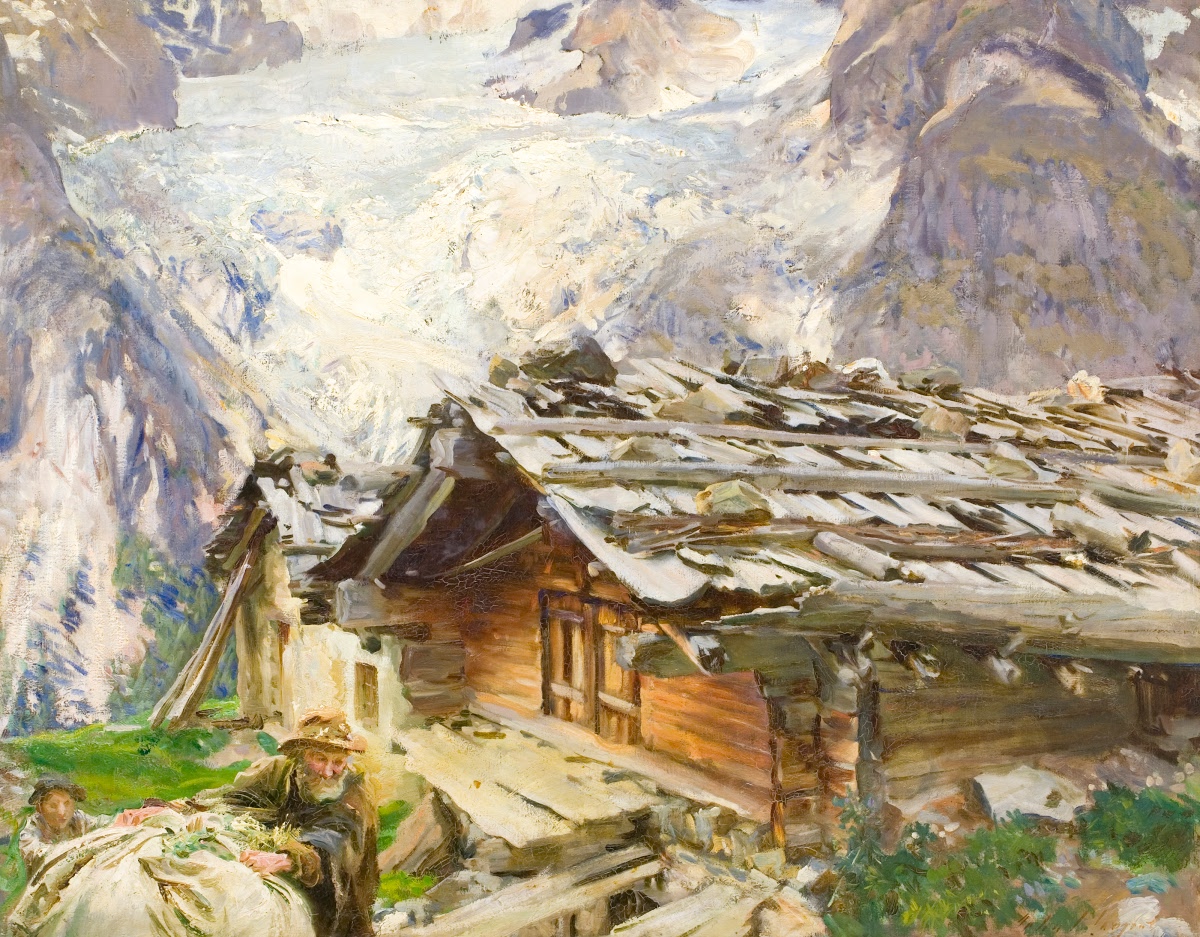Given 2024 Birds in Art Master Wildlife Artist Gunnar Tryggmo’s fondness for watercolor, it’s no wonder I’ve had the medium on my mind. But it isn’t just Gunnar’s work that has me considering the luminous water-based paint. Another watercolor master—American artist John Singer Sargent (1856–1925)—recently joined the Woodson’s permanent collection.

John Singer Sargent, Brenva Glacier, Purtud, ca. 1907, watercolor and pencil on paper laid down on paperboard, 14 x 20 in., Museum purchase with funds provided by the Nancy Woodson Spire Foundation
To say that Sargent was a prolific watercolorist is an understatement—he produced more than 2,000 watercolors in his life. While it was high society portraiture that helped make his career—including a scandalous portrait of Madame X who was recently the inspiration for a Halloween costume of mine, it was landscape that always held a particular fascination for the artist.

J.M.W. Turner, Brenva Glacier from the slopes of Le Chetif, above Courmayeur, Val D’ Aosta, ca. 1836, watercolor on paper, 9 1/2 x 13 in., National Galleries of Scotland
The Woodson’s work, entitled Brenva Glacier, Purtud, was painted circa 1907 when the artist was fifty-one years old. Well-established in his artistic career, in part thanks to his years of portraiture painting, the artist was finally able to indulge in his love for landscape. The Brenva Glacier, which issues from Mont Blanc into the Val Veny above the town of Purtud in the Alps near the French-Italian border, fascinated artists throughout the nineteenth century, capturing the attention of other seminal landscape artists such as J.M.W. Turner (1775–1851), as well as Sargent’s for several years. Sargent produced numerous watercolors of the site as well as at least one oil painting. Like our Birds in Art artists, Sargent was no stranger to field work—from 1900 to 1915, he spent part of nearly every summer in European mountains working, as his friend Eliza Wedgewood recounts, “literally all day till the light failed.”

John Singer Sargent, The Brenva Glacier, ca. 1908–09, oil on canvas, 36 1/2 x 46 in., Johannesburg Art Gallery
In Brenva Glacier, Purtud, Sargent’s wet-on-wet watercolor technique creates a landscape of soft edges and diffused blooms of color, its softness belying the intensive effort that went into its creation. The impressive geological feature is reduced to the gentlest suggestion of a sweeping brushstroke of blue at the painting’s top-third. Sargent’s characteristic colors of brown and purple flesh out the rocky face of the glacier’s mountain home. Rather than give the glacier pride of place, Sargent instead allows a circle of pines to dominate the composition’s middle ground. Rising into the crisp, cloudless sky, the pines seem to extend past the painting’s frame as if to encircle the viewer. In fact, Sargent provides us a broad, green-dappled glen replete with early August summer light to step into. A 1906 letter from Purtud notes that Sargent and his sister were “enjoying the delicious air of these mountains,” and in Brenva Glacier Sargent invites us to join him.




